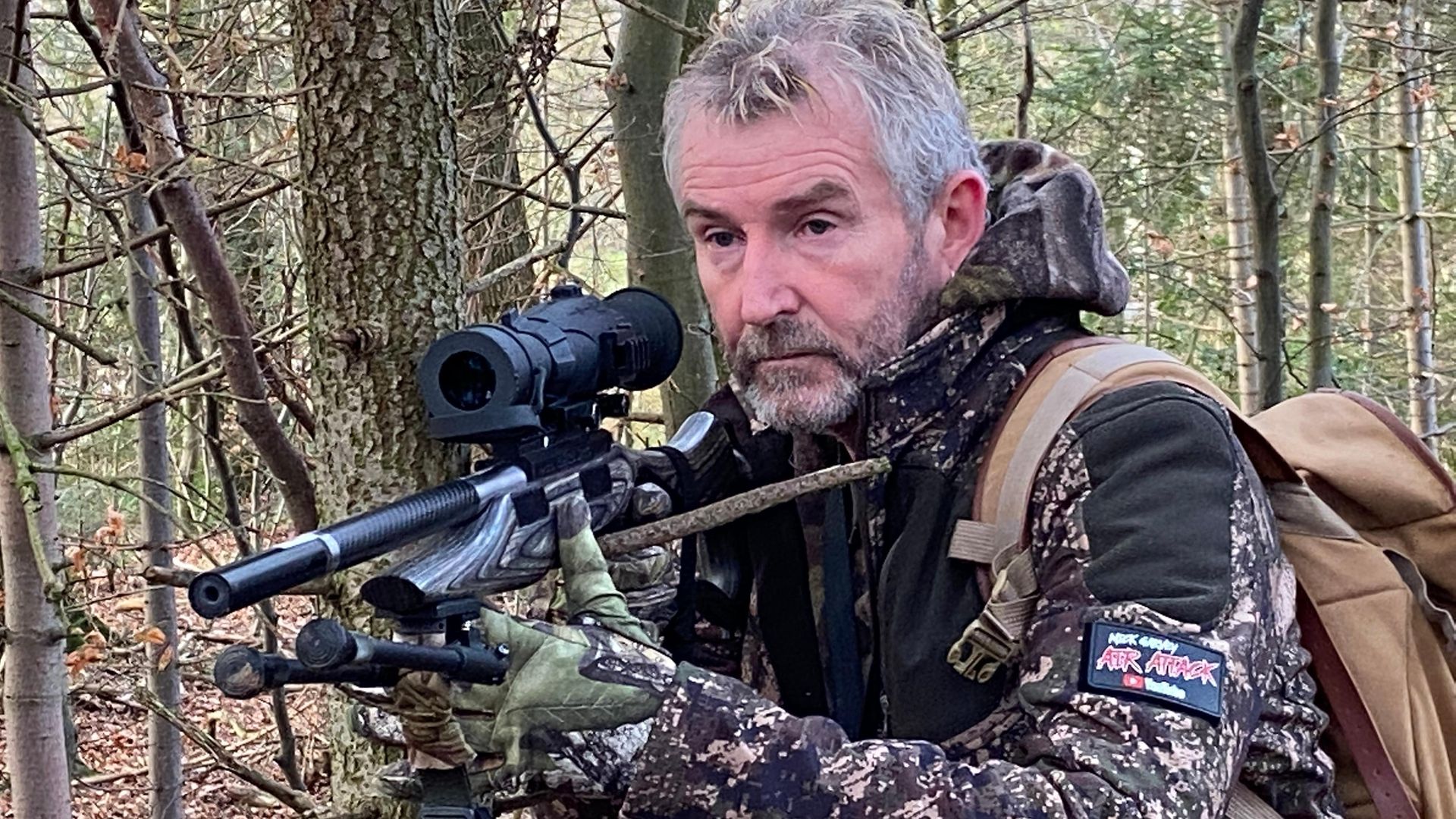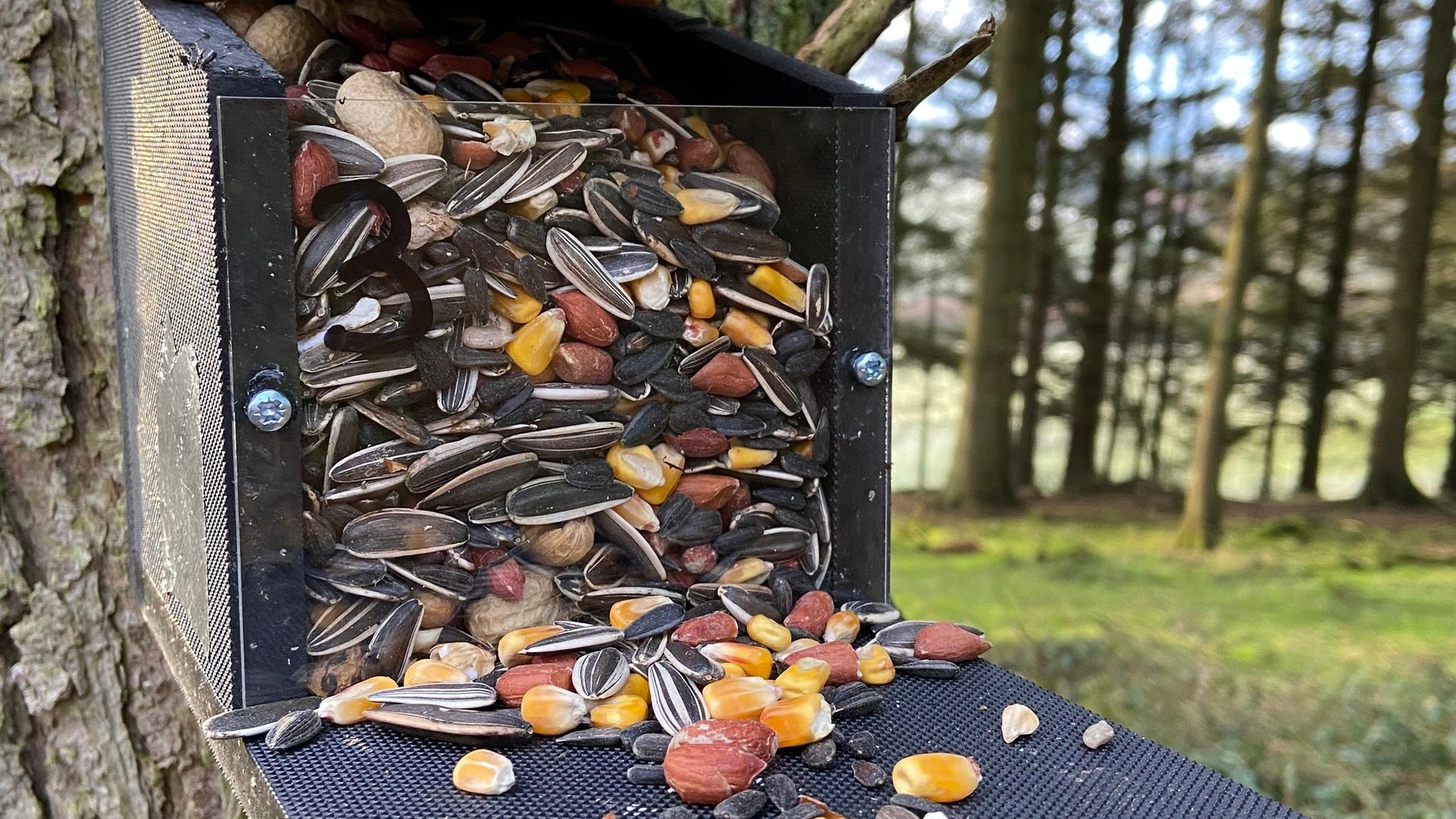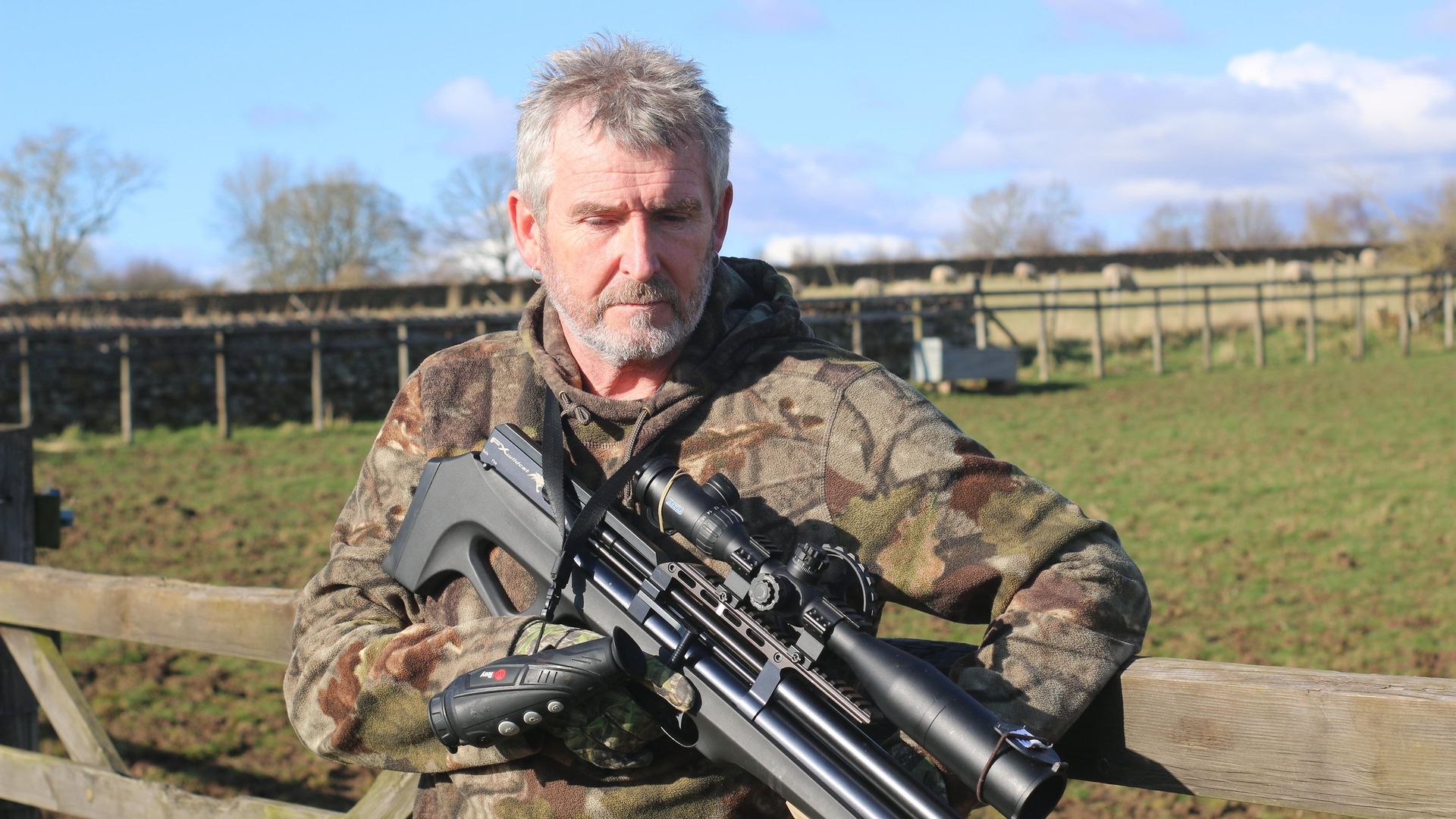Mick Garvey provides a guide to the art of grey squirrel shooting and the essential hardware required to take on the task of conserving our dwindling reds.
 credit: Mick Garvey
credit: Mick Garvey
The plight of the red squirrel has been something very close to my heart for more years than I care to remember. In the back of my mind I have a vague memory of seeing a red squirrel in a public park in Sheffield back in the late 1960s, but sadly and in reality it was probably a grey as the reds disappeared from most areas of the UK years ago.
The red population in the UK is thought to be in the region of 140,000 and they are believed to have been here for around 10,000 years. The decline of the native reds is mainly due to the introduction of the invasive grey squirrel from North America in the 1800s by the Victorians. It is estimated that without the extremely valuable work carried out by various conservation groups up and down the country that the reds could become extinct in maybe 10 years. We cannot allow this to happen.
Reds and greys share many things – woodlands, feed areas and even dreys – but not at the same time. Unfortunately, the two species cannot successfully survive, thrive or survive together, the main reason for this is the squirrel pox. The greys carry the pox but rarely suffer from it or the side effects but they can and do pass it on to the native reds, which in turn suffer an awful and agonising death. For this reason they have to be kept apart using whatever methods are available.
Symptoms can easily be spotted once you know what to look for. Skin ulcers, lesions, scabs, and discharges from the lesions and scabs near the eyes, mouth, feet and genitalia. It is a truly terrible sight. Spotting a red that looks lethargic is probably the first noticeable sign and closer inspection may reveal the other symptoms.
The hardest part of my work as a red squirrel ranger, and I hope for any pest controller, will be to humanely dispatch a red squirrel that has contracted the pox. Fortunately I have not been in the position where I have had to do this and hopefully never will, but it is an important part of the work as an infected red will suffer terribly and pass on the virus to other healthy reds.
Before I moved to Penrith and started my red squirrel conservation work for The Penrith & District Red Squirrel Group, I lived in Derbyshire. It’s a lovely area and I had built up some great permissions for pest control, which included not only grey squirrels but also huge numbers of wood pigeons, rabbits, foxes, deer, rats, corvids and feral pigeons. All this gave great satisfaction in the name of pest control but the squirrels were always a thing of fascination for me.
 credit: Mick Garvey
credit: Mick Garvey
Squirreling tactics
Greys are a worthy adversary and can test the best of us, especially when stalking alone. Once a grey spots us it’s on its toes and up that beech or oak tree, keeping the tree trunk between itself and you. No matter how much stealth and guile is employed, all you’ll see is the bushy tail disappearing round the tree as you try to catch up with it.
A proven method is for two to stalk; the grey will react to one sign of danger and move away from it and that is where the second person comes in. I have done this many times on many memorable trips over the years. We know each other’s ability well and we don’t need to communicate verbally – just a knowing look or nod in the right direction will suffice. One will slowly move around the tree, keeping an eye on where the quarry was last seen, while the second will wait with gun shouldered for the grey to appear. Its attention will be on the moving hunter and will be oblivious to the second waiting for the humane dispatch.
This is not possible when you’re alone, but I find an alternate to the first hunter is to give the squirrel a minute to settle and then create a distraction by throwing a stick, stone or something similar to create a response to impending danger. This generally brings the grey out of hiding and into direct view as it moves away from where it thinks the danger is, providing an opportunity for that perfect shot. This has been a successful method I have employed many times, but patience is key so don’t rush. It will happen.
 credit: Mick Garvey
credit: Mick Garvey
Baiting up
Before we move on to equipment, it’s worth mentioning feed. It will always be hard to compete with natural feed such as beech and hazel nuts, so offering the best possible alternative is the way forward. It has long been a debate as to what works best – some advocate wheat, others maize, peanuts… I prepare a mix of peanuts, striped sunflower seeds, black sunflower seeds, monkey nuts and a handful of maize for colour and to attract other species, which in turn alert the greys to the feed available.
This also acts as a supplementary feed for the reds. You’ll soon see what the greys prefer and I can guarantee that the order of feed taken is as follows: first monkey nuts, closely followed by peanuts, then striped sunflower, black sunflower and maize. I find that in an area that hasn’t been fed previously the monkey nuts, peanuts and striped sunflower seeds can send them into a feeding frenzy. Back in Derbyshire I had one such morning where the feed had them competing like crazy for it and I took 13 in under a couple of hours. So good feed in a good area is a must, and where reds are present it acts a supplementary feed for them – and they deserve it.
 credit: Mick Garvey
credit: Mick Garvey
Tools of the trade
The equipment I use is a wide and varied selection, from rifles to traps, feeders to trail cams, and remote indicators to binoculars. But one of the most important parts of my kit is the thermal spotter. It has been said a million times and it is as true today as it ever was: thermal spotters and scopes are game changers.
The spotter gives you the ability to see incoming quarry from way out – and I mean way out. Depending on the density of the woodland, undergrowth and foliage, you’ll see a heat source coming from well over 100yd, giving you time to prepare for the shot. It also assists you when approaching your wood or even hide, letting you know of any attendees that maybe already at the feeder.
In other scenarios it can be a real time saver. A single scan of a field when out rabbiting can tell you if it’s worth going into that field. This is again something I have done regularly. Some will say this takes part of the skill away from hunting and pest control but I believe you have to deliver the best, most effective and professional service. I’m sure when the first scope came onto the market it was classed as cheating, but time and technology move on relentlessly and we need to be on board and use our hard-earned skills in tandem with 21st century tech.
Traps and feeders are next up, along with trail cams and Remotis. The Remoti is an electronic signalling device that attaches to a trap and sends a notification email to your phone when the trap is activated. This is another time saver, although traps should be checked periodically and never left unchecked for longer than eight hours – less if possible. I tend to place my Remotis among a string of traps in a certain area, maybe four or five traps with one fitted with the Remoti. It can produce a dual effect and several times I have attended an alarm to dispatch a trapped squirrel only to find another grey feeding on another feeder, giving me a two for one deal that I might have missed without attending to the Remoti notification.
 credit: Mick Garvey
credit: Mick Garvey
Setting traps
I set my traps off the ground to avoid them being entered by ground dwelling critters and to be out of reach of badgers, which will destroy a trap to get to the bait inside. I have experienced this personally after mounting a trap just within reach of old Brock. The trap was totalled.
A little trick I use is to smear copious amounts of peanut butter inside the trap and stick the feed onto it. This has a threefold effect. First, it keeps the bait in place; second, it provides a scent that the greys will relate to; third, if placed correctly the squirrel will have to activate the trap to access the peanut spread.
I will also apply an amount to the top of the feeder, which is positioned adjacent to the trap, again giving a scent for them to home in on.
Completing the setup is a trail cam. These are an invaluable part of my armoury and another time saver. I am currently running 25 trail cams and each has two SD cards dedicated to it. Depending on known activity, I’ll visit the cams once or twice a week and download the images at home. In areas that have a high infestation of greys I’ll take my Android tablet to view the files on site to get some immediate intel on what’s around and then act appropriately. I’ll either close down the trap if reds are present or call back when the timestamps indicate is best.
The trail cams can provide you with great pleasure when reds are recorded, especially when the hard work you have put in sees a return of reds that haven’t been seen in years. It also makes your heart sink when greys turn up in a predominantly red area, but the info on visiting times will have you set up waiting at the next opportunity.
A point worth making is that any grey trapped should be dispatched using the sack and cranial tap method and not shot while in the trap, as if it is a carrier of the pox then the virus could be passed on through the blood. It is also necessary to clean and disinfect the trap after the grey has been removed, as the virus can also be transmitted in urine and faeces.
 credit: Mick Garvey
credit: Mick Garvey
Guns and ammo
This brings us to what I refer to as the hardware – rifles, scopes and ammunition. We all have personal favourite choices with these and there is no perfect equipment that works for everyone. I will use my FAC air rifles, .22 LR rimfire and my .17 HMR. The FAC air guns are generally my go-to rifles and have been since I started my shooting and hunting. The .22 LR gives me a lightweight option for ground-based greys and the .17 HMR gives me the long-distance option that I need in some areas, where getting close to an exposed position is not possible.
My choices for air are the FX Impact in .25 cal, FX Mk1 Wildcat in .22 and the new Air Arms S510T in .25. I don’t prefer any one of them over the others and they all shoot the Air Arms Diablo pellets and Wildman slugs well, with the Wildcat performing slightly better so far with the 27gr slugs. However, tuning is key to get the right performance from any slugs and I have tests ongoing to achieve the optimum results. Hawke are the scopes of choice for air, with the Airmax on the Wildcat and Impact, and the Endurance on the S510T. A DonnyFL Sumo maintains the silence on the Impact, whereas the others use the standard shroud and mod.
So now come the powder burners. The .22 LR comes in the shape of a Ruger 10/22, but in a Rimfire Magic configuration – Boyds Evolution stock, Volquartsen carbon-fibre barrel, Rimfire Magic receiver, and all the trickery you expect from Roger at South Yorkshire Shooting Supplies.
Maintaining the short, slim theme, moderation is afforded by a Turnright Galloway silencer. It essentially looks like a barrel extension but rest assured it is a top-quality item, and my sound tests have proved that it is as good as, if not better than, other silencers at a similar price. Sitting on top of the Rimfire Magic is the Sightmark Wraith 4K, a superb night-vision scope that comes in very useful for videoing and stills.
Thermal scopes are a big no-no for squirrel work in Cumbria, as you would be hard pushed to differentiate between reds and greys. No other ammunition graces my .22 LRs other than Eley subsonic hollow points. They are perfect for silent and stealthy pest control and are superbly accurate, reliable and consistent.
Last up is everyone’s favourite, the perfect all-rounder – the CZ .17 HMR. It comes into its own when some long range squirrelling is called for and the Hornady .17 HMR rounds are not only excellent but readily available just about everywhere. The Hawke Endurance sits up top and offers great vision through the excellent glass.
There are a few other things that form part of my squirrelling kit, including such necessities as clothing, footwear and rucksacks, but we can look at those later. It’s the above items that are the backbone of my squirrelling and the most important.